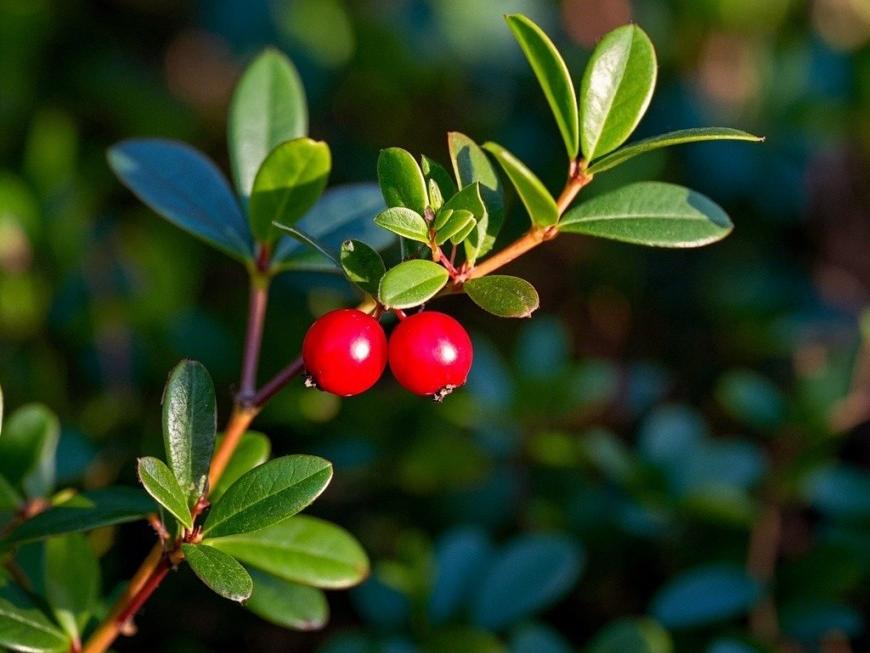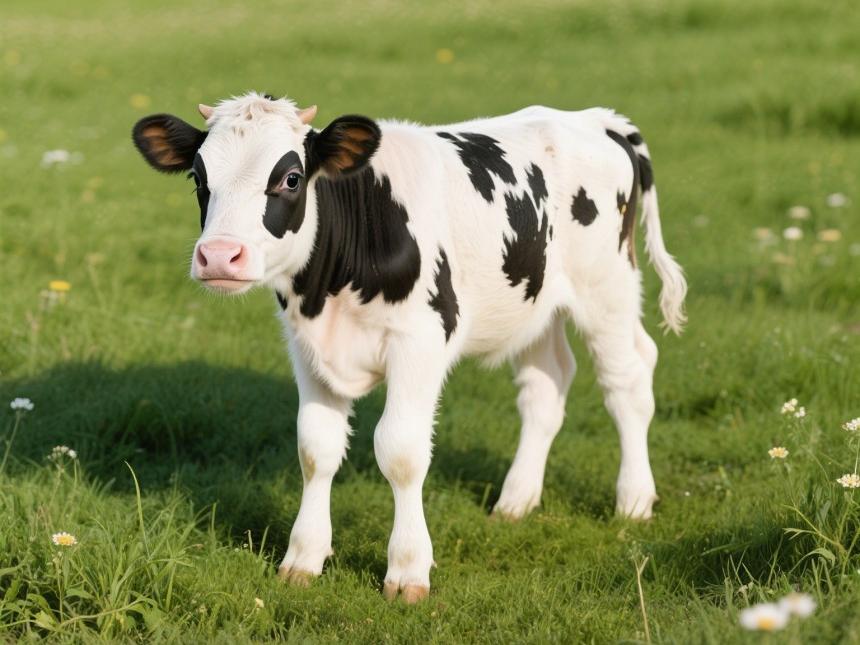Study on Cranberry Good for Antibacterial
Cranberries (Vacinium macrocarpon) are plants in the family Ericaceae. They grow in acidic bogs and sandy soils in the temperate to frigid zones of the Northern Hemisphere, and are currently mainly cultivated in the eastern and northeastern United States and most of Canada[1]. Cranberries are oval berries 2–5 cm long. The flesh under the red skin ranges from white to dark red in color and has a slightly sweet, tangy taste [2]. Cranberries are a valuable source of nutrients, fiber, organic acids and polyphenols. They are popular with consumers because of their many functions, including maintaining digestive health and acting as antioxidants.
A large number of biologically active plant compounds can be extracted from cranberries, and their various health benefits have been confirmed. The antioxidant properties of these extracts make them effective against tumours, prevent cardiovascular disease and slow down the ageing process [3]. Research has also found that the bioactive ingredients in cranberries have antibacterial properties. Cranberries can effectively prevent urinary tract infections (UTIs) by preventing bacterial infections of the urinary system [4], and health products with cranberry extract as the main ingredient for preventing UTIs can already be found on the market. Digestive ulcers caused by Helicobacter pylori seriously affect the health of the human stomach, and cranberry extracts have been shown to inhibit Helicobacter pylori [5].
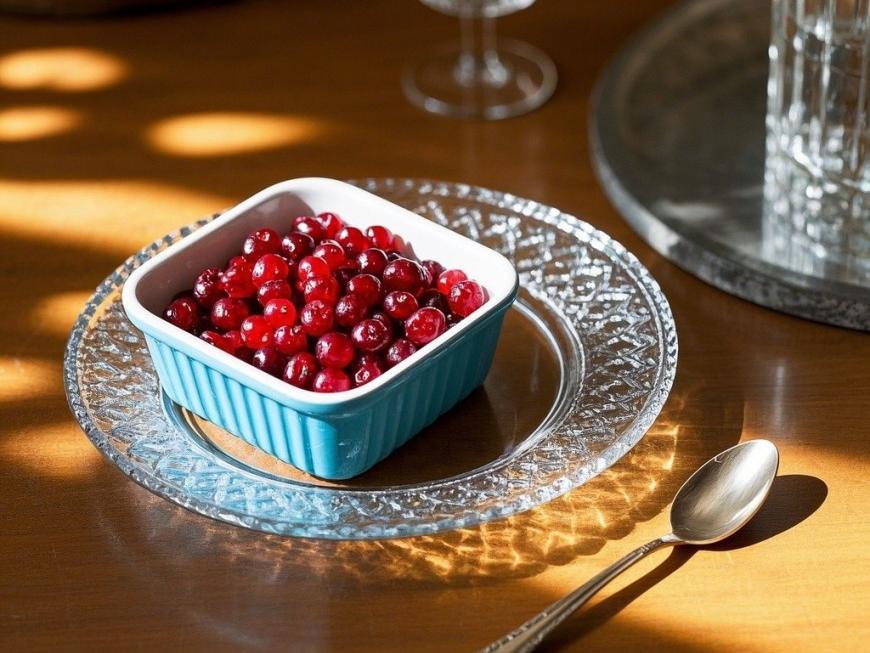
Researchers [6] have also found that cranberry extracts can inhibit acid production, adhesion and biofilm formation by Streptococcus mutans, and the potential benefits in reducing oral diseases (including dental caries and periodontitis). In addition, foreign research[7] has shown that the bioactive substances in cranberries have an inhibitory effect on foodborne pathogens, including Escherichia coli O157:H7, Listeria monocytogenes and several other gram-negative and gram-positive bacteria. This indicates that cranberry products have the potential to be used as natural antibacterial substances and as functional foods that can improve human health. This article aims to provide a review of recent research progress in China and abroad on the phytochemical composition of cranberries and their antibacterial mechanism of action, in order to provide a reference basis for the in-depth development of the cranberry industry.
1 Phytochemicals in cranberries
Phytochemicals are chemical compounds that occur naturally in plants. They are defined as non-nutrient, naturally occurring, biologically active compounds of plant origin [8]. Phytochemicals can be classified into six categories based on their chemical structures and characteristics, including carbohydrates, lipids, terpenes, phenolic acids, alkaloids and other nitrogen-containing metabolites [9]. Cranberries are known as “super fruits” due to their high content of natural nutrients and phytochemicals. Like most fruits, cranberries have the nutritional properties of being high in water, low in calories, high in fiber, and rich in vitamins and minerals [3]. In addition, cranberries are rich in many bioactive compounds, including polyphenols, organic acids, terpenes, and complex carbohydrates [10].
The organic acids and polyphenolic compounds in cranberries are the main components that give them their antimicrobial properties and thus their health benefits. The main non-volatile organic acids in cranberry juice are quinic acid, citric acid, malic acid and oxalic acid. These give cranberries a very low pH of about 2.5 among fruits [11-12]. Most organic acids in fruits have a carboxyl group (—COOH), which is why they are acidic. In addition to providing acidity, the taste, color and aroma of fruits are all related to organic acids. The low pH value they produce can also inhibit the growth of most pathogenic bacteria. In an experimental mouse model of urinary tract infection, the organic acids in cranberry juice were found to be able to prevent urinary tract infections by reducing bacterial levels in the bladder through combined use [13].
A class of plant compounds found in abundance in cranberries and studied for their biological activity is polyphenols. They are the main substances that give cranberries their antioxidant, antibacterial, anti-adhesion and anti-inflammatory properties. The basic structure is an aromatic ring with a hydroxyl group (—OH). Cranberries have been found to be a unique and rich source of polyphenols. Their total phenolic content is the highest among the 20 commonly consumed fruits in the American diet [14]. The main polyphenols they contain are anthocyanins, tannins (ellagitannins and proanthocyanidins), and a large number of flavonoids (flavonols and flavan-3-ols) [15].
Anthocyanins are probably the chemical component of cranberries that has been studied the most due to their strong antioxidant activity. Anthocyanins are also the main reason for the red color of cranberries, and some studies have found that they are one of the main substances that give cranberries their antibacterial activity [16].
The majority of the flavonols in cranberries are the glycosylated forms of quercetin, myricetin and kaempferol, while high levels of flavonols or flavan-3-ols are also the monomers of proanthocyanidin polymers [15]. Proanthocyanidins are the main polyphenolic compounds in cranberries, accounting for about 63% to 71% of the total phenolic content [17]. In addition, proanthocyanidins in cranberries have been found in numerous studies to have antioxidant, antimicrobial, anti-adhesion and anti-inflammatory effects.
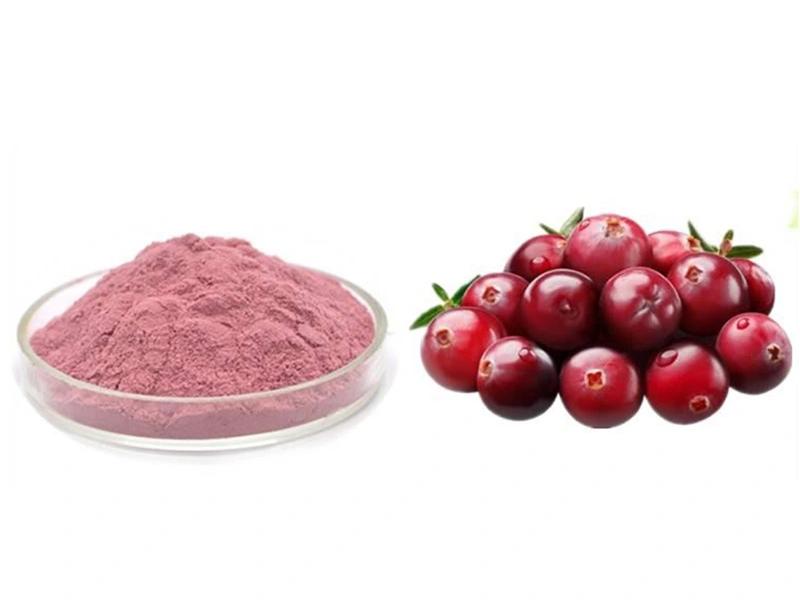
As shown in Figure 1 [18], the connection between the flavan-3-ol monomers that usually polymerize to form proanthocyanidins is of type B, i.e. connected by only one C—C bond between the “upper” and “lower” monomers; however, another connection mode (type A) is known to occur in condensed tannins, in which the flavan-3-ol “upper” and “lower” monomers are connected by an additional ether bond in addition to a C—C bond. Compared with proanthocyanidin B, proanthocyanidin A is very rare in nature. Cranberries are uniquely rich in proanthocyanidin A compared with other fruits, and UPLC-IM-HRMS results show that proanthocyanidin A dominates the proanthocyanidins in cranberries [19-20]. A previous study [19] found that proanthocyanidin A is the main bioactive substance that inhibits the growth of uropathogenic Escherichia coli.
2. The antibacterial effect of cranberries and its mechanism
2.1. Resistance to uropathogenic Escherichia coli and its mechanism
Urinary tract infections (UTIs) are among the most common bacterial infections in humans, and 70% to 90% of UTIs are caused by Escherichia coli that are pathogenic to the urinary tract [21]. Cranberries are widely recommended for preventing UTIs and are said to alleviate the symptoms of these infections.
Escherichia coli that are pathogenic to the urinary tract contain several virulence factors that contribute to the onset of infection, including P-fimbriae, type 1 fimbriae and hemolysin. Most bacterial infections of the kidneys and urinary tract are associated with P. aeruginosa [22-23]. The papG adhesin at the end of the P fimbriae structure binds to receptors on the epithelial cells of the urinary tract, thereby triggering inflammation. The plant compounds in cranberries, especially proanthocyanidin A oligomers, have been shown to be good anti-adhesion compounds in experiments. Liu et al. [24] used thermodynamic methods to find that cranberry juice disrupts the ability of P. aeruginosa to form ligand-receptor bonds with the receptors of urinary epithelial cells, and compresses the length of P. aeruginosa flagella, thereby reducing its adhesion to urinary epithelial cells.
Mathison et al. [25] also confirmed this conclusion using electron microscopy, and found that the adhesion of E. coli to uroepithelial cells was significantly reduced by treatment with a proanthocyanidin extract from cranberries. In addition to proanthocyanidins, other low-molecular-weight phenols and phenolic acids (such as catechol, benzoic acid, vanillic acid, phenylacetic acid and 3,4-dihydroxyphenylacetic acid) have also been reported to have an anti-adhesive effect in vitro on uropathogenic E. coli [21].

The results of most current studies [23–25] indicate that cranberry juice and cranberry extracts prevent urinary tract infections by reducing the adhesion of uropathogenic E. coli. However, some studies [4] have also shown that they reduce the symptoms associated with urinary tract infections by inhibiting the inflammatory cascade, i.e. the immune response to bacterial invasion.
A study using a mouse model of urinary tract infection [13] found that the number of bacteria in the bladder of mice drinking fresh cranberry juice was reduced, demonstrating the antibacterial effect of cranberry juice and its organic acid combination. Cranberries are rich in quinic acid, which can be metabolized into hippuric acid, a powerful antibacterial agent [26]. In addition, due to changes in pH, the metabolism of phenols is easily affected by organic acids. Therefore, the polyphenols and organic acids in cranberries can be used synergistically to prevent urinary tract infections.
2.2 Anti-Helicobacter pylori and its mechanism
Helicobacter pylori infection is the culprit behind peptic ulcers, gastritis and stomach cancer [27]. Helicobacter pylori is a Gram-negative, spiral-shaped bacterium that can survive and multiply in the human stomach and duodenum. By releasing an enzyme called “urease”, it can convert urea into ammonia, which then neutralizes stomach acid, thereby allowing H. pylori to survive in the stomach protected from stomach acid [28].
Li et al. [5] found in a randomized, double-blind, placebo-controlled trial in H. pylori-positive adults that daily consumption of proanthocyanidin-rich cranberry juice may help enhance the inhibitory effect on H. pylori. The inhibitory effect of cranberries on H. pylori includes the following mechanisms: the phytochemicals in cranberries can inhibit the adhesion of H. pylori to the stomach [29]; the antioxidant activity of polyphenols can slow down the symptoms of H. pylori-induced gastritis [30]; Matsushima et al. [30] conducted a morphological study using scanning electron microscopy and found that cranberries can inhibit the growth of Helicobacter pylori by inducing it to become spherical. In addition, polyphenols can also inhibit the growth of pathogenic bacteria such as Helicobacter pylori by promoting the growth, proliferation or survival of beneficial intestinal bacteria, thereby exerting a prebiotic effect [31].
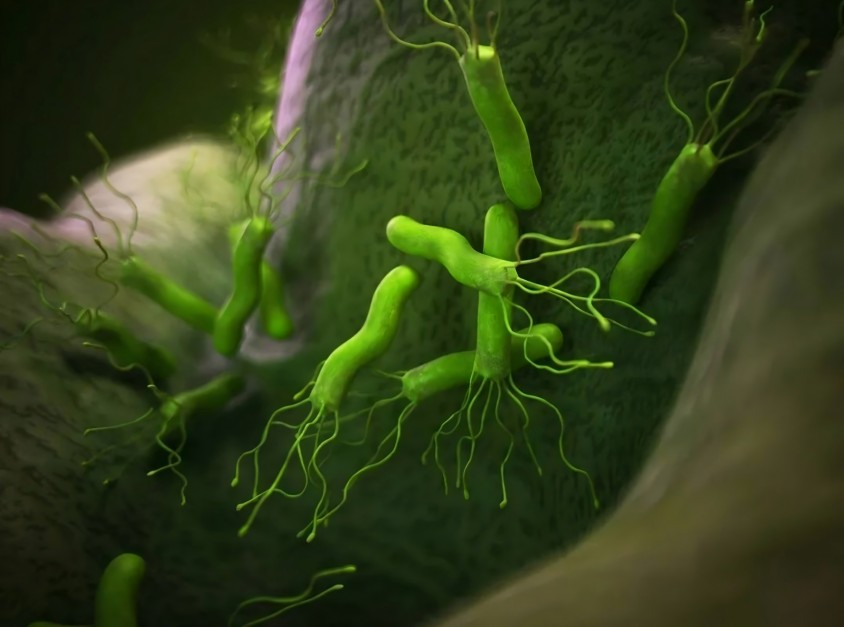
2.3 Anti-oral bacteria and its mechanism
The bioactive components in cranberries have attracted increasing attention from dental researchers in recent years, and the potential benefits of cranberry juice components in reducing oral diseases have been discovered. Plaque is an oral biofilm composed of bacteria, cells, proteins and enzymes, and is the main causative factor of oral diseases such as dental caries, gingivitis and periodontitis [32]. Among these, bacteria such as Streptococcus mutans and Streptococcus sanguinis are often associated with dental caries. They can attach to the oral biofilm and spread over the surface to form microcolonies [6].
A clinical trial using a mouthwash supplemented with cranberry extract [33] found that the inhibitory effect on streptococci was not significantly different from that of the current gold standard mouthwash containing chlorhexidine gluconate. The proanthocyanidins A-type dimers and oligomers in cranberries can inhibit the development of dental caries by disrupting the acid production, acid tolerance and metabolic function of Streptococcus mutans, thereby reducing the formation of biofilms.
Sanchez et al. [34] also found that the polyphenols in cranberries have a certain inhibitory effect on periodontal pathogens that can form biofilms, and can inhibit biofilm formation by inhibiting bacterial adhesion. Because cranberry juice has anti-adhesive properties against oral bacteria and anti-biofilm formation, it is recommended for improving oral health.
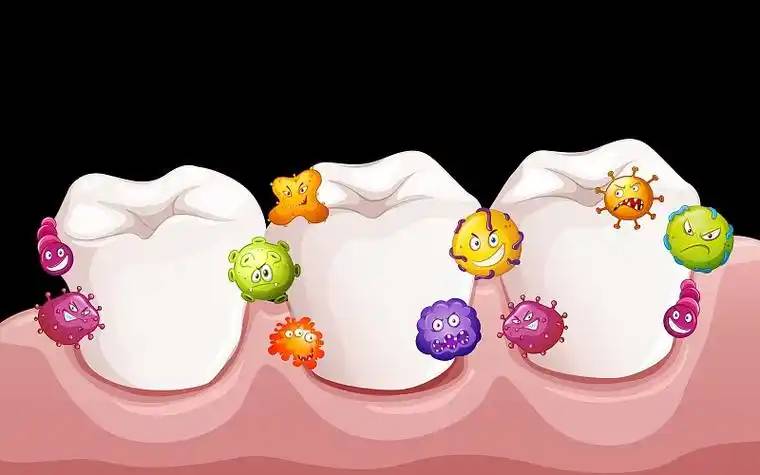
2.4 Anti-foodborne pathogens and their mechanisms
Foodborne diseases are a major threat to human health. The causative agents are very diverse, and most are caused by bacteria or toxins produced by bacteria. Symptoms in patients include diarrhea, vomiting, fever, gastroenteritis, and in severe cases, sepsis, dehydration, and even death [35]. In recent years, there have been numerous food safety incidents caused by microbial contamination at home and abroad, which have not only seriously endangered human health, but also caused huge economic losses.
Research [36] has found that the low pH of cranberries and their bioactive phenolic compounds both have an inhibitory effect on bacteria. The organic acids in cranberries, especially quinic acid, malic acid and citric acid, can cause osmotic pressure, thereby causing sublethal damage to the components of bacterial cell membranes. Lacombe et al. [16] found that the phenolic compounds in cranberries, including anthocyanins, flavonols and proanthocyanidins, can achieve a bactericidal effect by destroying the structural integrity of the bacterial cell wall, cell membrane and intracellular matrix. Moreover, proanthocyanidins can bind to bacterial membrane lipopolysaccharides, weaken the bacterial outer membrane, change membrane permeability and fluidity, and thus induce cell lysis.
On the other hand, probiotics, as bacteria that are beneficial to human health, are often expected to be undamaged in the diet and even added to the daily diet as a supplement. Foreign research[37] has pointed out that the polyphenols in cranberries have significant antibacterial effects on common foodborne pathogens, but at the same time hardly affect the survival of probiotics such as Lactobacillus and Bifidobacterium. This is because probiotics have several defense strategies in extreme environments, including a proton ionophore-induced oxidative stress mechanism, timely removal of toxic oxygen, and higher membrane fluidity due to their energy transduction systems. Furthermore, a study [38] pointed out that there is a potential synergistic effect between proanthocyanidins in cranberries and probiotics in cell culture models for reducing the invasion of extraintestinal pathogenic Escherichia coli.
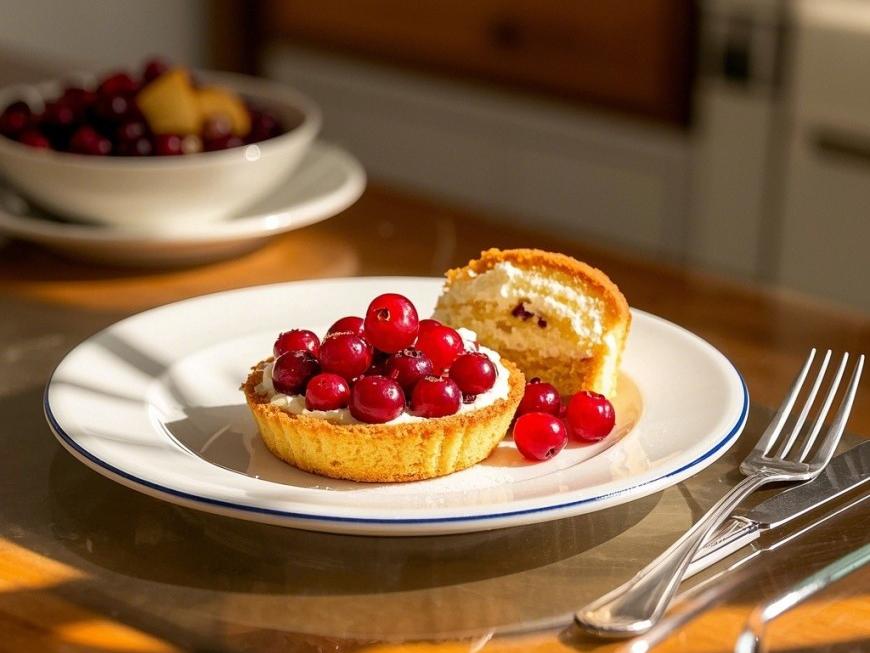
3 Conclusion
Protecting food and the human body from pathogens is very necessary. At present, people often use the method of adding antimicrobial compounds to food to improve quality and extend the shelf life, as well as the use of antibiotics in the human body to fight microbial damage. However, with society paying more and more attention to nutrition and food safety, natural and safe foods are more popular with consumers, and the improper and excessive use of artificial antibiotics and preservatives may lead to the residue of antimicrobials, thus causing the emergence of antimicrobial-resistant bacteria. Therefore, it is very meaningful to find natural substances with antibacterial activity. Current research shows that cranberries and their products have the potential to be used as a functional food that is beneficial to human urinary tract, stomach, oral cavity and intestinal health. Their plant compounds can be used in antibacterial drugs and natural preservatives, which requires more research in the future.
Reference
[1] ZHAO Shao-min , LIU Hai-yan , GU Li-wei. American cran- berries and health benefits : An evolving story of 25 years[J] . Journal of the Science of Food and Agriculture , 2020 , 100 (14) : 5 111-5 116.
[2] Guo Jia, Ding Qingbo. Overview of the nutritional and functional properties of cranberries [J]. Processing of Agricultural Products (Journal), 2011(5): 100-104.
[3] Wei Yan, Zhan Ziyi, Zhang Yu. Research progress on the bioactive substances and main physiological functions of cranberries [J]. Food Research and Development, 2017, 38(10): 219-224.
[4] VASILEIOU I , KATSARGYRIS A , THEOCHARIS S , et al. Current clinical status on the p reventive effects of cran- berry consumption against urinary tract infections[J] . Nutrition Research , 2013 , 33(8) : 595-607.
[5]LI Zhe-xuan , MA Jun-ling , GUO Yang , et al. Suppression of helicobacter pylori infection b y daily cranberry intake : A double-blind , randomized , placebo-controlled trial [ J ] . Journal of Gastroenterology and Hepatology , 2020 ,
[6]BODET C , GRENIER D , CHANDAD F , et al. Potential oral health benefits of cranberry[J] . Critical Reviews in Food Science and Nutrition , 2008 , 48(7) : 672-680.
[7] CAILLET S , COTE J , SYLVAIN J F , et al. Antimicrobial effects of fractions from cranberry p roducts on the growth of seven pathogenic bacteria[J] . Food Control , 2012 , 23 (2) :
419-428.
[8]CHANG S K , ALASALVAR C , SHAHIDI F. Review of dried fruits : Phytochemicals , antioxidant efficacies , and health benefits[J] . Journal of Functional Foods , 2016 , 21 : 113-132.
[9]PURI B , HALL A , BAXTER H , et al. Phytochemicaldic- tionary : A handbook of bioactive compounds from plants[ M] . 2nd ed. [S.l. ]: CRC Press , 1998 : 12-16.
[10]PAPPAS E , SCHAICH K. Phytochemicals of cranberries and cranberry p roducts : Characterization , potential health effects , and p rocessing stability[J] . Critical Reviews in Food Science and Nutrition , 2009 , 49(9) : 741-781.
[11] JENSEN H D , KROGFELT K A , CORNETT C , et al. Hydrophilic carboxylic acids and iridoid glycosides in the juice of American and European cranberries (Vaccinium macrocarpon and V. oxycoccos) , lingonberries (V. vitis- idaea) , and blueberries (V. myrtillus) [J] . Journal of Ag- ricultural and Food Chemistry , 2002 , 50(23) : 6 871-6 874.
[12] BAZINET L , BRIANCEAU S , DUBE P , et al. Evolution of cranberry juicephysico-chemical parameters during phenolic antioxidant enrichment by electrodialysis with filtration membrane[J] . Separation and Purification Tech- nology , 2012 , 87 : 31-39.
[13] JENSEN H D , STRUVE C , CHRISTENSEN S B , et al. Cranberry juice and combinations of its organic acids are ef- fective against experimental urinary tract infection [J] . Frontiers in Microbiology , 2017 , 8 : 542.
[14] VINSON J A , SU Xue-hui , ZUBIK L , et al. Phenol antioxidant quantity and quality in foods : Fruits[J] . Journal of Agricultural and Food Chemistry , 2001 , 49(11): 5 315-5 321.
[15]COTE J , CAILLET S , DOYON G , et al. Bioactive com- pounds in cranberries and their biological p rop erties[J] . Critical Reviews in Food Science and Nutrition , 2010 , 50 (7) : 666-679.
[16] LACOMBE A , MCGIVNEY C , TADEPALLI S , et al. The effect of American cranberry (Vaccinium macrocarpon) constituents on the growth inhibition , membrane integrity , and injury of Escherichia coli O157 : H7and Listeria mono- cytogenes in comparison to Lactobacillus rhamnosus [J] . Food Microbiology , 2013 , 34(2) : 352-359.
[17] KYLLI P , NOHYNEK L , PUUPPONEN-PIMIR , et al. Lingonberry (Vaccinium vitis-idaea) and European cran- berry (Vaccinium microcarpon) p roanthocyanidins : Isola- tion , identification , andbioactivities[J] . Journal ofAgricul- tural and Food Chemistry , 2011 , 59(7) : 3 373-3 384.
[18] CIRES M J , WONG X , CARRASCO-POZO C , et al. The gastrointestinal tract as a key target organ for the health- p romoting effects of dietaryproanthocyanidins[J] . Frontiers in Nutrition , 2016 , 3 : 57.
[19] FELICIANO R P , KRUEGER C G , REEDJ D. Methods to determine effects of cranberryproanthocyanidins on extrain- testinal infections : Relevance for urinary tract health[J] . Molecular Nutrition & Food Research , 2015 , 59 ( 7 ) : 1 292-1 306.
[20] WANG Yi-fei , HARRINGTON P D , CHANG T , et al. A- nalysis of cranberry p roanthocyanidins using UPLC-ion mobility-high-resolution mass spectrometry[J] . Analytical and Bioanalytical Chemistry , 2020 , 412 : 3 653-3 662.
[21] DE LLANO D , ESTEBAN-FERNANDEZ A , SANCHEZ- PATAN F , et al. Anti-adhesive activity of cranberry phenolic compounds and their microbial-derived metabolites againsturopathogenic Escherichia coli in bladder epithelial cell cultures [ J ] . International Journal of Molecular Sciences , 2015 , 16(6) : 12 119-12 130.
[22] LANE M C , MOBLEY H L T. Role of P-fimbrial-mediated adherence in pyelonephritis and p ersistence of uropathogenic Escherichia coli ( UPEC) in the mammalian kidney[J] . Kidney International , 2007 , 72(1) : 19-25.
[23] RIBIC R , MESTROVIC T , NEUBERG M , et al. Effective anti-adhesives ofuropathogenic Escherichia coli[J] . Acta Pharmaceutica , 2018 , 68(1) : 1-18.
[24] LIU Ya-tao , GALLARDO-MORENO A M , PINZON- ARANGO P A , et al. Cranberry changes the physicochemi- cal surface p rop erties of E . coli and adhesion with uroepi- thelial cells [J] . Colloids and Surfaces B : Biointerfaces , 2008 , 65(1) : 35-42.
[25] MATHISON B D , KIMBLE L L , KASPAR K L , et al. Development and validation of a sensitive , high-throughput bi- oassay for the adhesion of radiolabeled E . coli to uroepithe- lial cells in vitro[J] . Journal of Natural Products , 2013 , 76 (9) : 1 605-1 611.
[26] FELLERS C R , REDMON B C , PARROTT E M. Effect of cranberries on urinary acidity and blood alkali reserve [J] . Journal of Nutrition , 1933 , 6(5) : 455-463.
[27] Sun Qiongmei. Do you know the dangers of Helicobacter pylori infection? [J]. Health Care Literature, 2020(7): 148.
[28] DUNN B E , COHEN H , BLASER M J . Helicobacter pylori[J] . Clinical Microbiology Reviews , 1997 , 10 (4) : 720-741.
[29] BURGER O , WEISS E , SHARON N , et al. Inhibition of- Helicobacterpylori adhesion to human gastric mucus b y a high-molecular-weight constituent of cranberry juice [J] . Critical Reviews in Food Science and Nutrition , 2002 , 42 (S3) : 279-284.
[30] MATSUSHIMA M , SUZUKI T , MASUI A , et al. Growth inhibitory action of cranberry onHelicobacter pylori [J] . Journal of Gastroenterology and Hepatology , 2008 , 23 : S175-S180 .
[31]HERVERT-HERNANDEZ D , GONI I. Dietary polyphenols and human gut microbiota : A review[J] . Food Reviews International , 2011 , 27(2) : 154-169.
[32] LILJEMARK W F , BLOOMQUIST C. Human oral micro- bial ecology and dental caries and p eriodontal diseases[J] . Critical Reviews in Oral Biology and Medicine , 1996 , 7(2) : 180-198.
[33]KHAIRNAR M R , KARIBASAPPA G , DODAMANI A , et al. Comparative assessment of cranberry and chlorhexidine mouthwash on streptococcal colonization among dental students : Arandomized parallelclinicaltrial[J] . Contemporary Clinical Dentistry , 2015 , 6(1) : 35-39.
[34] SANCHEZ M C , RIBEIRO-VIDAL H , BARTOLOME B , et al. New evidences of antibacterial effects of cranberry a- gainst p eriodontal pathogens[J] . Foods , 2020 , 9(2) : 246.
[35] Xing Junhua, Wen Wei, Yin Ming. Microbiological examination and analysis of bacterial food poisoning [J]. Electronic Journal of Integrated Chinese and Western Medicine Cardiovascular Disease, 2020, 8 (27): 95-103.
[36] LAY A T Y , BARBUT S , ROSS K , et al. The effect of cranberry pomace ethanol extract on the growth of meat starter cultures , Escherichia coli O157 : H7 , Salmonella en- terica serovar Enteritidis and Listeria monocytogenes[J] . LWT-Food Science and Technology , 2019 , 115 : 108452.
[37] LACOMBE A , WU V Chi-hua. The potential of berries to serve as selective inhibitors of pathogens and promoters of beneficial microorganisms [J] . Food Quality and Safety , 2017 , 1(1) : 3-12.
[38] POLEWSKI M A , KRUEGER C G , REED J D , et al. A- bility of cranberryproanthocyanidins in combination with a p robiotic formulation to inhibit in vitro invasion of gut epi- thelial cells by extra-intestinal pathogenic E . coli [J] . Journal of Functional Foods , 2016 , 25 : 123-134.


 English
English French
French Spanish
Spanish Russian
Russian Korean
Korean Japanese
Japanese

